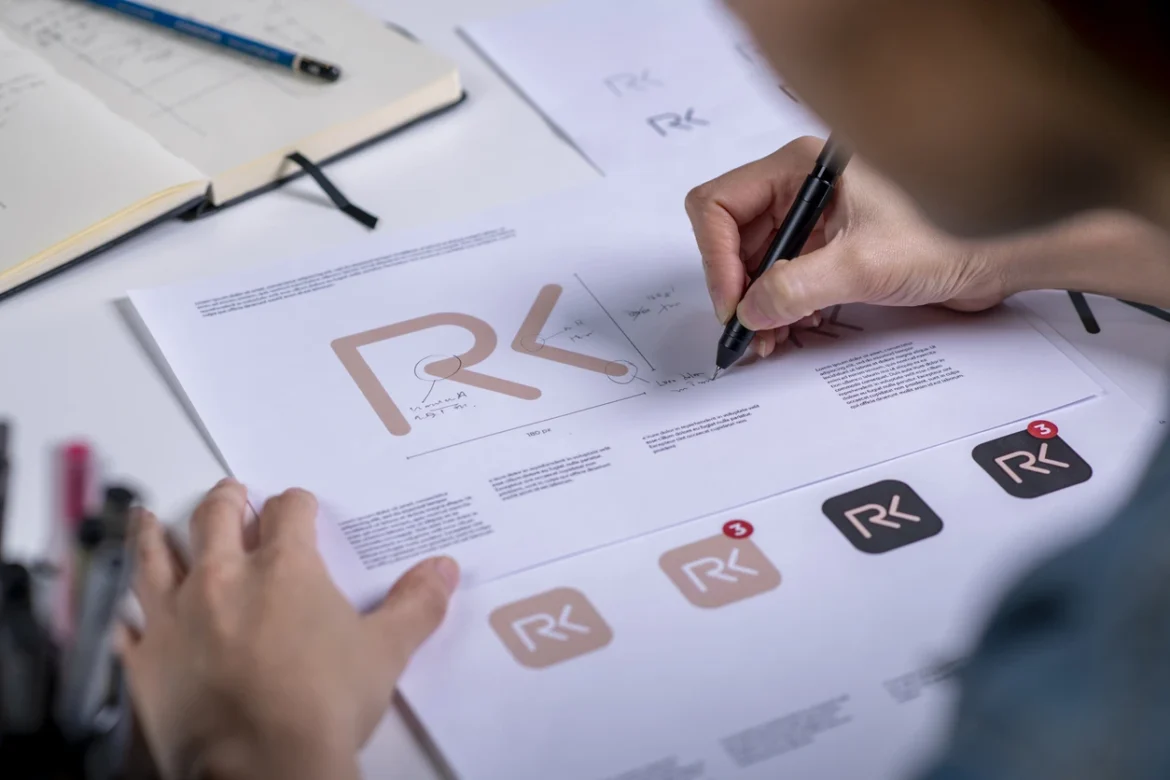In India, design protection is a legal framework established under the Designs Act, 2000, that safeguards the unique visual aesthetics of a product. This includes the exclusive right to a product’s shape, configuration, pattern, ornamentation, and the composition of lines or colors.
For businesses and creators, securing design registration is a critical step in preserving the commercial value of their intellectual property, as it prevents competitors from unlawfully replicating the unique look and feel of their products, thereby maintaining a competitive edge in the market. It allows them to differentiate their products from competitors, enhancing brand recognition. Registered designs can increase the market value of a business. They can be considered intangible assets, which can be leveraged for funding and investment opportunities. Registration reassures consumers of the authenticity and originality of products. This can build brand loyalty and trust among customers. Manufacturers can license their registered designs to others, creating an additional revenue stream through royalties
Eligibility Criteria: What Designs Can Be Registered?
To qualify for protection, a design must satisfy the following criteria for obtaining design registration in India:
- Novel and Original: The design must be new and not previously published or used anywhere in the world by any means. It must be originating from the creator, not a mere imitation. It has a distinct visual impression in comparison to existing designs.
- Applied to an article: The design must be applied to an article that is manufactured or capable of being manufactured. “Article” means any object produced by industrial process, including parts of an article that can be made and sold
- Visual Appeal — Not Functional: Protection is only for features of shape, configuration, pattern, ornamentation, or composition of lines or colors applied to the article. These features must appeal to the eye. Functional or mechanical aspects are not protected under the Designs Act (those fall under patents).
Examples of Registered Designs in India
- Shape and Configuration of a perfume bottle
- Pattern of a textile fabric
- Surface ornamentation on a dinner set
Exclusions: Designs that are:
- Dictated solely by function
- Contrary to public order or morality or security of India
- Method of construction or relates only to mechanical devices (e.g., gears, hinges) without visual appeal
- Trademark or artistic work under the Copyright Act.
Step-by-Step Guide to Design Registration in India
Here’s a step-by-step guide to obtain design registration in India via the Controller General of Patents, Designs, and Trademarks (CGPDTM):
Step 1: Design Search (Recommended)
Before filing an application, it is highly advisable to conduct a thorough search to ensure your design is new and original. This helps avoid potential objections and legal conflicts with existing registered designs.
- How to search: You can use the public search database on the official website of the Controller General of Patents, Designs, and Trademarks (CGPDTM) or may file a formal request together with prescribed official fee for obtaining an official search report.
- What to look for: Search for designs that are similar in appearance, shape, configuration, or pattern to your own.
Step 2: Preparation of Representation
- Design Representations: This is a crucial part of the application. Create high-quality line drawings or CAD images or photographs of the design of multiple views (from front, back, left side, right side, top and bottom) including a perspective/isometric view of the entire and full article.
- Statement of Novelty and Disclaimer: Include a statement clearly claiming the unique features of the design e.g. “Novelty resides in the shape and configuration. Add disclaimer for mechanical contrivance. Also add disclaimer for trademark, word, letter, numeral, extraneous matter etc., if any is depicted in the representation of the design.
Step 3: Determination of the Classification of the Design
Classify the Design based on the nature and use of the article as specified in the latest edition of the Locarno Classification Index.
Consider obtaining registration of the design in multiple classes, if the design spans different product types.
Step 4: Preparation/compilation of other documents for filing the Application
- Form 1: The primary application form for design registration. It must include (i) all details about the applicant (name, address, nationality) and status i.e. individua/small entity/start-up/corporate body (ii) name of the article to which the design has been applied (iii) Class number and (iv) address for service. If priority is claimed under the Paris convention, then include priority details as well.
- Power of Attorney (if applicable): Please sign the power of attorney, if application is filed through a legal professional.
- Priority Document: Priority documents i.e. certified copy of the priority application, if priority is claimed.
- Proof of entity status: Document evidencing the small entity/star-up status of a company, if application e.g. MSME certificate for small entities.
Step 5: Filing the Application
The application, along with the prescribed fee, can be filed either online or physically.
- Online Filing: The CGPDTM provides an e-filing portal.
- Physical Filing: Application can be submitted at the Designs Office in Kolkata or at the branch offices of the Patent Office in Delhi, Mumbai, and Chennai.
Step 6: Examination of the Application
After filing, the Designs section of the Indian Patent Office examines the application to ensure it complies with the provisions of the Designs Act, 2000.
- Formal Examination: The office checks for completeness and proper submission of all documents to comply with formal and procedural requirements.
- Substantive Examination: The substantive examination is conducted to verify the registrability of a design under the Designs Act, particularly that
- The design must be new and original and not previously disclosed anywhere in the world
- The design must fall within the statutory definition of a “design” under the Designs Act
- The design does not fall under any of the excluded categories
- The class number is appropriate for the design sought to be registered
Step 7: Response to Objections (if any)
If the examiner finds any objections, they issue a First Examination Report (FER). The applicant must respond to the objections within a specified time frame (six months from the date of filing in India, with a possible extension of three months).
This may involve providing clarifications, amending the representation/application issuance of further examination report or attending a hearing.
Step 8: Grant of Registration and Publication
If the application is accepted after a successful examination and resolution of all objections, the design is officially registered.
- Certificate: The Designs Office issues a e-Certificate of Registration, which serves as legal proof of ownership.
- Publication: The registered design is published in the official Designs Journal, making it a matter of public record.
Tips for Smooth Registration
To maximize your chances of successful and swift registration, consider these key best practices:
Ensure Accuracy in Class Selection:
Designs are registered under specific “classes” of goods, which are defined by the Locarno Classification. Selecting the correct class is paramount. An inaccurate classification can lead to objections from the examiner and may even jeopardize the validity of your registration. Take the time to identify the most appropriate class and sub-class for your article to avoid delays and ensure your protection is correctly scoped.
Avoid Generic or Commonly Used Shapes:
The essence of design protection lies in novelty and originality. A design that is a slight variation of a common shape or is simply a combination of known designs will likely face objections. The examiner will assess whether your design is “significantly distinguishable” from existing designs. To strengthen your application, ensure your design embodies a unique aesthetic that sets it apart from what is already in the public domain.
Maintain Meticulous Records of Design Development:
From the initial sketches to the final prototypes, keep a detailed record of your design’s development. This documentation can serve as crucial evidence of your design’s originality and the date of its creation. In case of any objections or a dispute, having a clear and dated trail of your design process can be invaluable in demonstrating its novelty and originality to the Designs Office.
Clear and Comprehensive Representations are Key:
The drawings or photographs you submit are the sole basis on which your design will be judged. They must be of high quality, free from clutter, and show the design from all relevant angles (e.g., front, back, top, bottom, left side, right side and perspective views). Ambiguous or poorly rendered images are a leading cause of objections and can lead to a misinterpretation of the unique features you are trying to protect. Avoid additional objects in the background that is not part of the design. Ensure consistency, same proportions and features in all views.
Indian’s Design Application Growth: Key Findings
India has experienced remarkable growth in intellectual property filings over the past five years, with designs showing the second-highest growth rate at 266%. This surge is part of a broader 44% overall increase in IP filings, rising from 477,533 in 2020-21 to 689,991 in 2024–251.
Several key reforms that have specifically benefited design applications:
- Simplified Procedure: Streamlined documentation procedures and accelerated processing have substantially reduced bureaucratic impediments, enabling designers to secure protection with greater efficiency. This is of particular benefit to industries with fast-paced design innovation cycles, such as textiles, furniture, and electronics.
- Alignment with Locarno Classification: The adoption of the international Locarno Classification system has streamlined design applications, making India’s design registration process compatible with global standards.
- Fee Concessions: 75% fee reduction has been made in design applications for startups and MSMEs/Small Entities
- Digital Filing: A comprehensive E-Filing System has been introduced for the online filing and submission of Design applications and all design related matters.
- Accessibility: Applicants no longer need to visit the IP office for filing and processing of their applications
- Real-Time Support: Features like e-certificates, SMS alerts, and an Open House IT Helpdesk ensure designers can resolve issues quickly, making the process more transparent and efficient. This is critical for time-sensitive industries where design trends evolve rapidly.
Step 9: Marking the article of Design Registration
- Marking an article to prevent anyone from pleading innocent infringement
Step 10: Duration and Renewal
- Initial Validity: The initial term of design protection in India is 10 years from the date of registration.
- Renewal: The registration can be renewed for an additional 5 years by filing a renewal application (Form 3) before the initial 10-year term expires.
Step 11: Enforcement
Your Rights as a Registered Design Owner:
- Exclusive right to apply design to any article
- Right to prevent others from applying the design
- Right to license or assign the design
- Right to take legal action against infringers
If someone copies or imitates a registered design without permission, the owner can
- Send a cease & desist notice.
- File an infringement suit in a district court.
The Designs Act, 2000, provides several robust legal remedies for design infringement. Understanding these mechanisms and proactively addressing potential challenges is crucial for creators and businesses to effectively safeguard their intellectual property.
The remedies for infringement are civil in nature.
a) Injunctions
- Purpose: Stop the infringer from continuing the unlawful use of the design.
- Types:
- Interim/Temporary Injunction: Granted quickly to prevent ongoing damage before the final decision.
- Permanent Injunction: Granted after trial, restraining the infringer permanently.
b) Monetary Compensation
The registered proprietor can claim either:
- Damages – To compensate for actual loss suffered; OR
- Account of Profits – Recover profits the infringer made from using the design.
Statutory cap: Section 22(2) of the Designs Act sets a limit — the total recoverable amount cannot exceed ₹50,000 per registered design in respect of one act of infringement.
c) Delivery-Up / Seizure of Infringing Goods
- Court can order the infringing products to be seized and delivered to the design owner for destruction or other disposal.
2. Procedural Steps
- Filing a Civil Suit in a District Court or High Court having jurisdiction.
- Plaintiff must prove:
- The design is validly registered.
- The defendant’s product is a fraudulent or obvious imitation.
- No consent was given.
3. Border Enforcement
- The Intellectual Property Rights (Imported Goods) Enforcement Rules, 2007 allow the design owner to request Customs authorities to detain and seize imported goods infringing their registered design.
4. Defenses Available to the Alleged Infringer
The defendant may claim:
- The design is not valid (lacks novelty, not registrable).
- The design was previously published or in the public domain.
- The alleged infringement is not a “fraudulent or obvious imitation.”
Key Takeaways and Best Practices for Innovators
- Conduct thorough competitive analysis to understand existing designs in your domain and to avoid infringement of existing registered designs
- Identify design gaps or unmet user needs
- Avoid “inspired-by” work that closely resembles competitor designs.
- Maintain detailed design documentation (sketches, renders, iterations) to establish a timeline of originality.
- File as early as possible in the design stage (before public disclosure).
- Consider multiple-class registrations if the design spans different product types.
- Use a registered patent agent to avoid errors.
- Monitor design filings by competitors.
- Use watch services on competitors.
- Use NDAs with vendors, freelancers, or partners.
- Include design ownership clauses in employment and subcontractor agreements.
- Be cautious when outsourcing manufacturing or digital assets.
- Marking an article to prevent anyone from pleading innocent infringement
- Link design with branding and trademarks.
- Use licensing agreements to monetize designs or enter new markets.
- In case of infringement- act quickly in –
- Sending Cease & desist notices
- Initiating Legal Action against Infringement of Design Registration
Common Pitfalls to Avoid:
- Publicly showcasing designs before filing registration
- Assuming copyright or trademark alone protects product appearance
- Not considering international design filings (Hague System) if exporting
In India’s growing innovation economy, design protection is no longer optional—it is a strategic IP asset. With a strong legal foundation under the Designs Act, 2000, and rising awareness, businesses that secure their industrial designs early can unlock market advantage, build brand identity, and deter infringers. The 2025 design trends confirm this growth trajectory, making now the ideal time to invest in formal design registration in India.
Frequently Asked Questions (FAQ)
1. What is the Designs Act, 2000?
It is the primary legislation governing design protection in India, providing legal rights to original, non-functional, aesthetic designs.
2. What types of designs are eligible for protection under Indian law?
Any original, new, and aesthetic design applied to an article, excluding functional or technical elements.
3. What is the process for registering a design in India?
It involves filing an application with drawings, undergoing examination, and upon approval, getting registration valid for up to 15 years.
4. How can I enforce my design rights in India?
Through civil remedies like injunctions and damages, and by recording rights with Indian Customs for border enforcement.
5. Is registration of a design mandatory in India?
Yes. Only registered designs receive legal protection. Without registration, there is no enforceable right under the Designs Act



